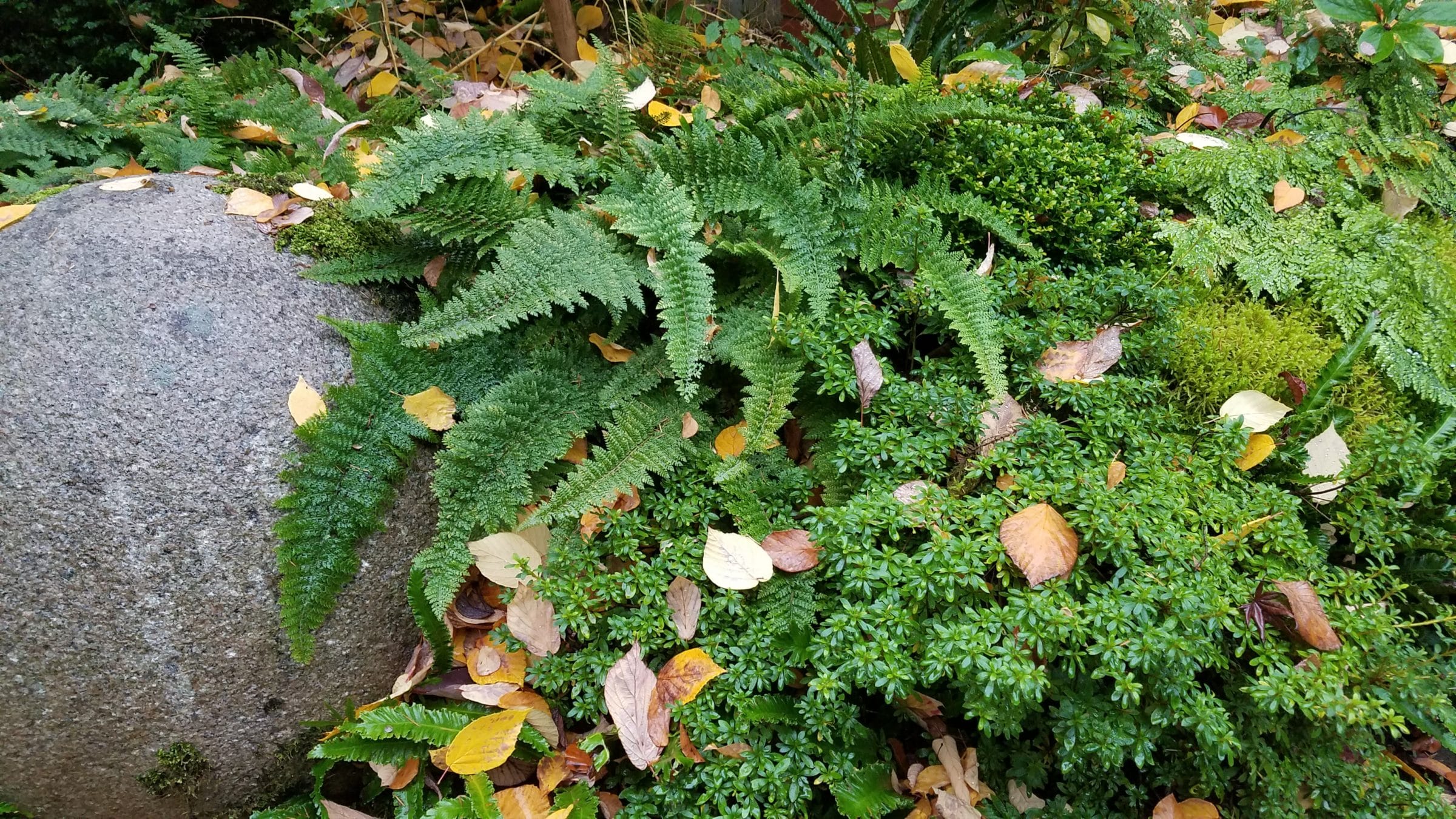
10 Ferns That Improve the Quality of Your Life
Perhaps one of the simplest ways to improve your health and therefore your overall quality of life is by adding plants to your home, specifically ferns. In the following article, you will discover 10 ferns that improve the quality of your life. Various fern species have excellent air-purifying qualities that will mitigate the exposure to toxins in your home. This is especially true in energy-efficient homes where poor construction can prevent outdoor air exchange, unintentionally increasing the concentrations of indoor pollutants.
By filtering toxins from the air and converting them into harmless byproducts, the ferns can even improve how well you sleep. Numerous studies were conducted to confirm these claims and each has found the same results.
“The efficiency of volatile formaldehyde removal was assessed in 86 species of plants representing five general classes (ferns, woody foliage plants, herbaceous foliage plants, Korean native plants, and herbs)…. Ferns had the highest formaldehyde removal efficiency of the classes of plants tested..” (Claudio, Luz )1
“The American Academy of Allergy, Asthma, and Immunology Indoor Allergen Committee suggested in a 2010 report that allergists consider indoor air filtration to be part of a comprehensive strategy to improve respiratory health.”( Claudio, Luz )2
Even NASA has researched the effects of plants on air quality, which should tell you the importance of incorporating some ferns into your living space. The following list provides some good choices that will get you on the way to breathing and feeling better.
1. Nephrolepis exalta – Boston Fern

Among the best air-purifying houseplants, the Boston fern removes pollutants such as formaldehyde and xylene. Perfect for a hanging basket, it acts like a natural air humidifier that will make that unpleasant dry winter air more bearable. People with respiratory issues can benefit from the air purifying qualities of this fern.
Family – Polypodiaceae
Nativity – Southern US / North-South America
Hardiness – USDA Zone 9-11
Description;
1. Form – Erect and tufted
2. Landscape Size – Medium
3. Texture – Medium
4. Growth Rate – Fast in warm climates and slower indoors
5. Foliage – Linear fronds with multiple pinnae
6. Fruit – Spores
Culture;
1. Light – Outdoors in partial shade / Indoors in bright filtered light
2. Soil – Indoor use 1 part loam, 2 parts sand, and 3 parts leaf mold
3. Pruning – Not required
4. Transplanting – Separate rooted runners in late winter or early Spring
5. Propagation – Sow spores at 70° as soon as they are ripe
6. Pests and Diseases – Aerial blight, leaf spot, root rot, spider mites, scale and mealybug
2. Adiantum capillus-veneris – Maidenhair fern
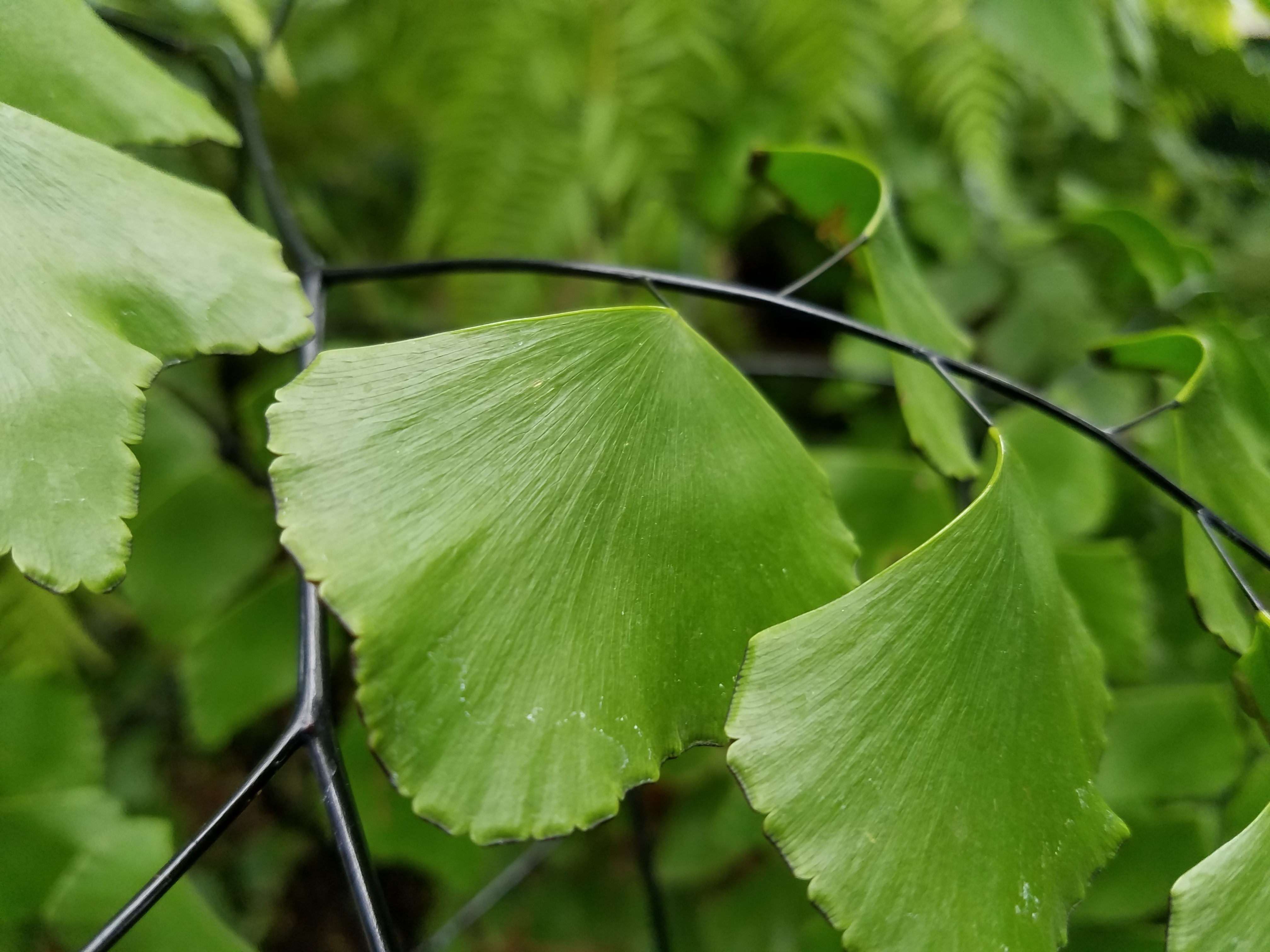
One of the most effective natural air cleaners, this fern has beautiful fronds with a black rachis. Despite having little use in modern herbal medicine, this fern has a rich history of medicinal applications. Utilize this fern to purify air tainted with car fumes, cigarette smoke, or industrial development.
Family – Pteridaceae
Nativity – North and South America, Europe, Asia, and Australia
Hardiness – USDA Zones 7-10
Description
1. Form – Slightly arching
2. Landscape Size – 12” – 15” tall and wide
3. Texture – Light and delicate
4. Growth Rate – Medium
5. Foliage – Pinnately compound fronds with apple green leaflets ¼” across
6. Stems – Almost black
7. Fruit – No fruit, but sori that are produced under the older fronds on the margin of the leaflet
Culture
1. Light – Part shade
2. Soil – Moist and well-drained, ensuring it never dries out
3. Pruning – Remove older fronds when they begin to yellow
4. Transplanting – During the growing season
5. Propagation – Division or spores
6. Pests and Diseases – Scale, slugs and aphids
3. Asparagus densiflorus ‘Myersii’
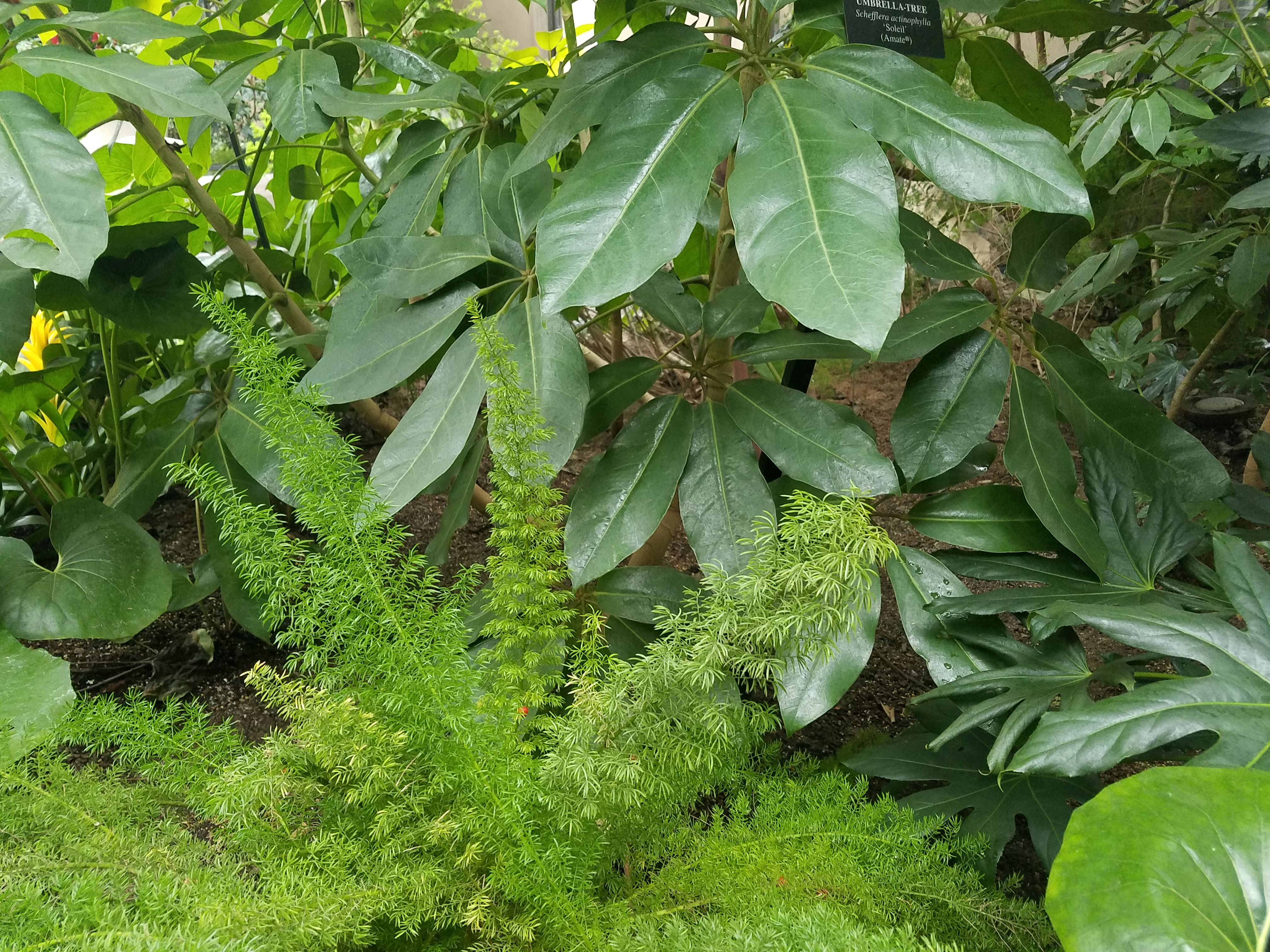
The Asparagus Fern is a versatile plant that can adapt to most conditions. Although this perennial plant resembles a fern, the name is a misnomer. This herbaceous evergreen perennial is related to the edible asparagus and reproduces via seed rather than spore dispersal.
The fragrance of Asparagus Fern can kill bacteria and viruses that linger in the air and filter formaldehyde. Perfect addition for residents of large cities where exposure to CO2 emissions is high, its air-purifying properties can also alleviate asthma symptoms.
Family – Asparagaceae
Nativity – South Africa
Hardiness – USDA Zones 8-11
Description;
1. Form – Upright to slightly arching
2. Landscape size – 1’-3’ in height and width
3. Texture – Medium to coarse
4. Growth – Fast to medium depending on conditions
5. Foliage – Bright green cladophylls
6. Stem – Rigid and upright
7. Flower – White and clustered along the stem
8. Fruit – Red outdoor, but rare indoors
Culture;
1. Light – Full Sun
2. Soil – Well-drained
3. Pruning – Remove oldest stems at the base
4. Transplanting – In Spring
5. Propagation – Seed or division
6. Pests and Diseases – Mealybugs and aphids
4. Nephrolepis obliterata – Kimberley Queen Fern
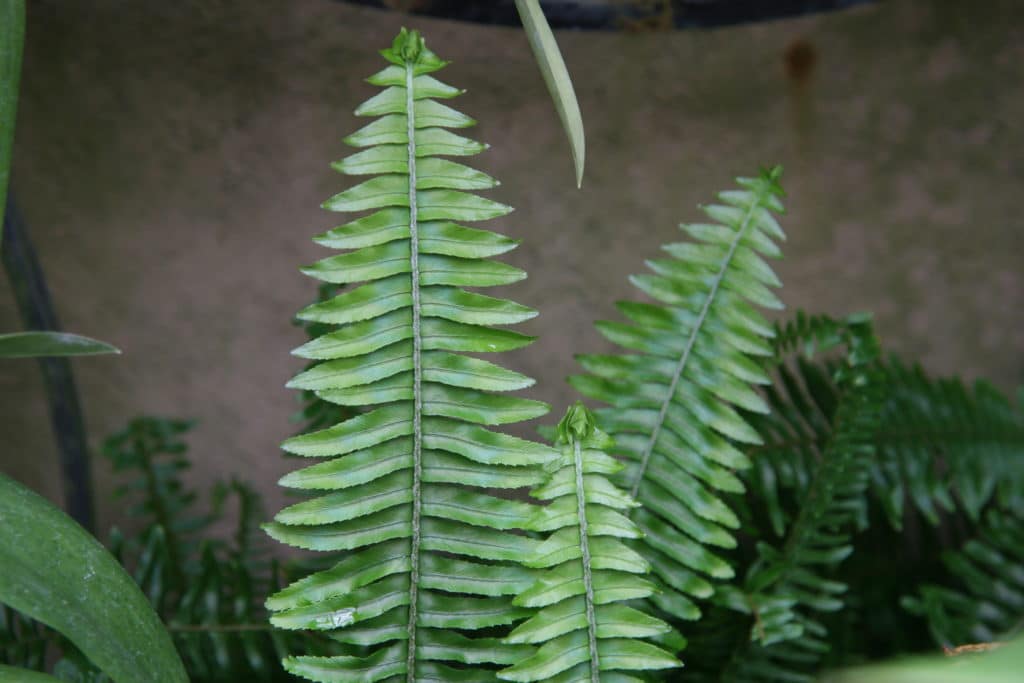
This fern gives you a breath of fresh air from its air-purifying qualities as well as its visual appeal. Its high respiration rate makes it an excellent natural humidifier and the fronds are highly effective at metabolizing harmful chemicals like formaldehyde and xylene into gentle by-products.
The Kimberley Queen Fern is ideal for placing in homes exposed to paint fumes or cleaning solvents. People suffering from any respiratory issues can greatly benefit from the presence of this plant.
Family – Polypodiaceae
Nativity – Australia
Hardiness – USDA Zones 9-11
Description;
1. Form – Upright bushy with sword-like fronds
2. Landscape Size – 3’ high
3. Texture – Light and airy
4. Growth Rate – Dependent on fertilizer rates
5. Foliage – Leaflets have scalloped margins / Fronds are evergreen
6. Fruit – None
7. Spacing – 2’-3’
Culture
1. Light – Light shade, bright indirect light
2. Soil – Moist soil / Do not let dry out
3. Pruning – Remove any spent fronds if needed
4. Transplanting – Repot in Spring
5. Propagation – Division and spores
6. Pests and Diseases – Scale, mealybug, and slugs
5. Asplenium nidus ‘Crispy Wave’ – Bird’s Nest Fern
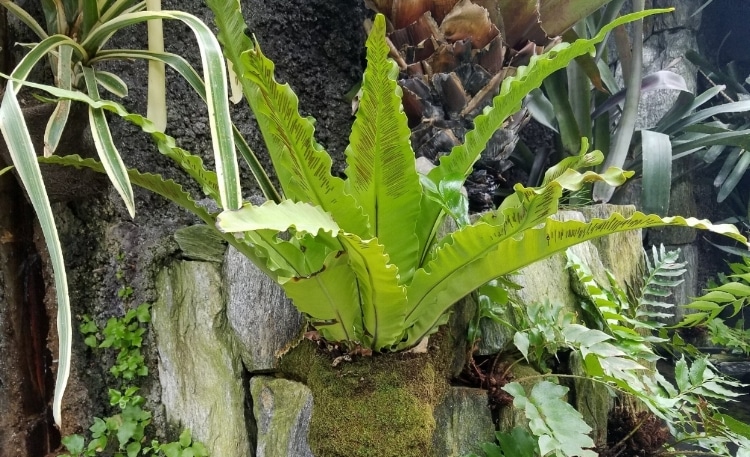
According to NASA’s air purifying plant study 5, the number one factor in determining a plant’s oxygen-producing capabilities is the amount of surface area the foliage possesses. The undulation of the Crispy Wave’s fronds makes this Bird’s Nest cultivar a perfect fern specimen for removing harmful air pollutants.
Besides the waviness, the fronds are also thick and rigid, permitting the filtration of toxins like formaldehyde at a higher rate than even the highly praised Boston Fern; a high scorer in the NASA study. In addition, the benefits of this fern will only increase as its size increases! So place your Asplenium in a North-facing window, water regularly, and ensure your media is well-draining to have a long-lived fern.
Family – Polypodiaceae
Nativity – Tropical Asia and Polynesia
Hardiness – USDA Zone 10-11
Description;
1. Form – Epiphytic nest shape
2. Landscape Size – 16” – 24”
3. Texture – Coarse
4. Growth Rate – Slow
5. Foliage – Simple, bright green curly and stiff fronds
6. Fruit – None
7. Spacing – 1’-2’
Culture
1. Light – Low light
2. Soil – Moist well-drained soil /Do not let dry out
3. Pruning – Minimal maintenance
4. Transplanting – Repot during the growing season
5. Propagation – Spores
6. Pests and Diseases – Scale and slugs
6. Pteris multifida – Spider Brake
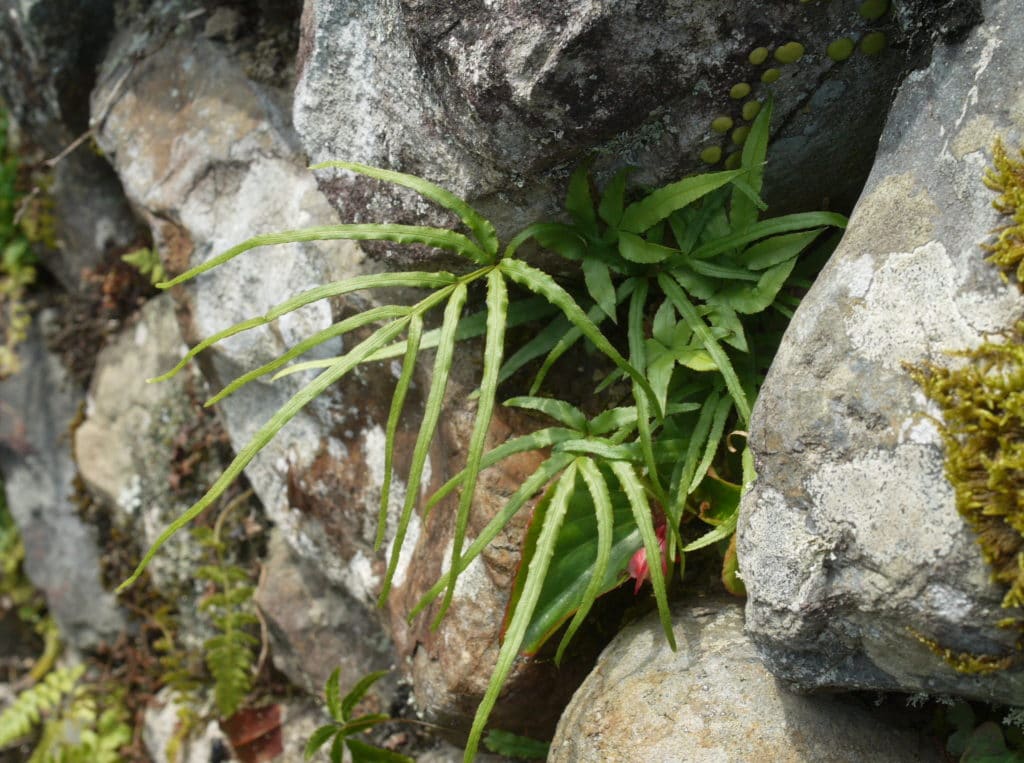
The species name, multifida, refers to the multiple divisions of the pinnae. This adaptable fern grows in cracks and crevices and is even considered a weed in some parts of the world. A helpful identification characteristic of the Pteris genus is the false indusia that cover the naked spores.
Instead of a protective membrane called the indusium covering the spores, the margins of the pinnae fold over until the spores are mature enough to release. This fern is very adept at breaking down formaldehyde and benzene air pollutants and the ease of growing the Spider Brake makes this an ideal houseplant.
Family – Pteridaceae
Nativity – Widely Naturalized
Hardiness – USDA Zone 7-10
Description;
1. Form – Dimorphic with leafier sterile fronds / Dark stipe with a winged rachis
2. Landscape Size – 60 cm x 25 cm
3. Texture – Papery and glabrous
4. Growth Rate – Fast
5. Foliage – Bright green oblong to oblanceolate
6. Fruit – Spores
7. Spacing – 12” on center
Culture
1.Light – Light shade
2. Soil – Porous media
3. Pruning – Remove old stipe and leaf litter as needed
4. Transplanting – Repot during late Spring
5. Propagation – Division / Spores
6. Pests and Diseases – Scale, mealybug, rust and leaf spot
For a more detailed description of this plant visit http://www.jaycjayc.com/pteris-multifida/
7. Platycerium bifurcatum – Staghorn Fern
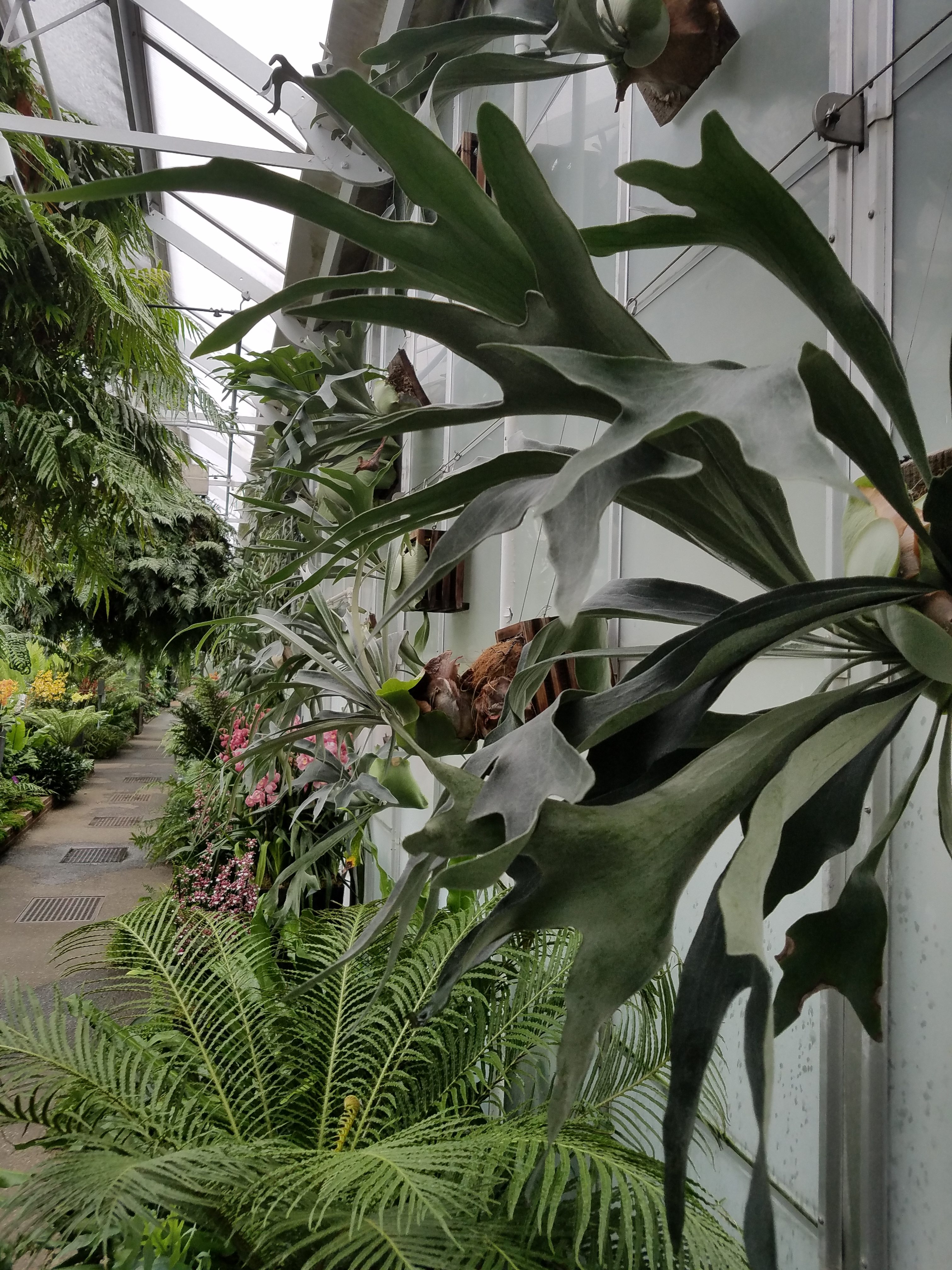
Despite being somewhat hardy and tolerating a light frost, the Staghorn Fern must be over winterized in hardiness zones below eight. Not only does this fern provide help with the degradation of air toxins, but its epithetic growth habit also makes it a perfect specimen for decorating your walls.
To mount your Platycerium bifurcatum, place a few handfuls of damp sphagnum moss or orchid mix on a piece of bark or (untreated) wood board. Place the fern over the mound of the medium, so that the flat, round basal fronds are touching the board. Use twine, wire, or fishing line to firmly hold the fern to the board.
Family – Polypodiaceae
Nativity – Australia
Hardiness – USDA Zone 8b-11
Description;
1. Form – Evergreen, evergreen with a short creeping rhizome
2. Landscape Size – 1’ – 3’
3. Texture – Medium to coarse
4. Growth Rate – Fast
5. Foliage – Dimorphic with fertile fronds being grayish and forked, while sterile fronds are erect or horizontal and often referred to as “shield fronds”
6. Fruit – Sori cover the back tips of mature fronds entirely
7. Spacing – 1’ – 2’
Culture;
1. Light – Bright indirect light
2. Soil – Well-drained, can be mounted; Keep moist in summer and allow to dry in winter
3. Pruning – Remove spent fronds as they yellow
4. Transplanting – Spring-Summer
5. Propagation – Spores or division of pups
6. Pests and Diseases – Scale
8. Osmunda japonica – Japanese Royal Fern
What can’t this fern do!? This guy will filter your air and provide you with a meal at the same time. The fronds and rhizomes are edible when prepared properly. Take caution when attempting to eat any food you are unfamiliar with and consult a professional edibles guide to ensure no ill effects.
As far as air purification, the Asian Royal Fern can boast about the distinction of being the best fern at phytoremediation among its class. Among 86 subjects, Osmunda japonica ranked first at removing formaldehyde.
When growing Osmunda japonica in your home, remember that it thrives near streams and riverbanks and thus requires a steady supply of water.
Family – Osmundaceae
Nativity – Asia
Hardiness – USDA Zone 5-9
Description;
1. Form – Clumping sterile fronds spreading and bipinnate / Fertile erect fronds turn brown-red in fall like its relative O. cinnamomea
2. Landscape Size – 1’-3’ but can reach 5’ with constant moisture
3. Texture – Light and feathery
4. Growth Rate – Medium to slow
5. Foliage – Bipinnate fronds
6. Fruit – Spores
7. Spacing – 2’
Culture
1. Light – Part shade / Some sun
2. Soil – Moist acidic loamy soils
3. Pruning – Remove spent sterile fronds / Leave fertile fronds as an ornamental display
4. Transplanting – Not difficult
5. Propagation – Divide when dormant / Spores
6. Pests and Diseases – None serious
9. Selaginella tamariscina – Spike Moss / Resurrection Fern
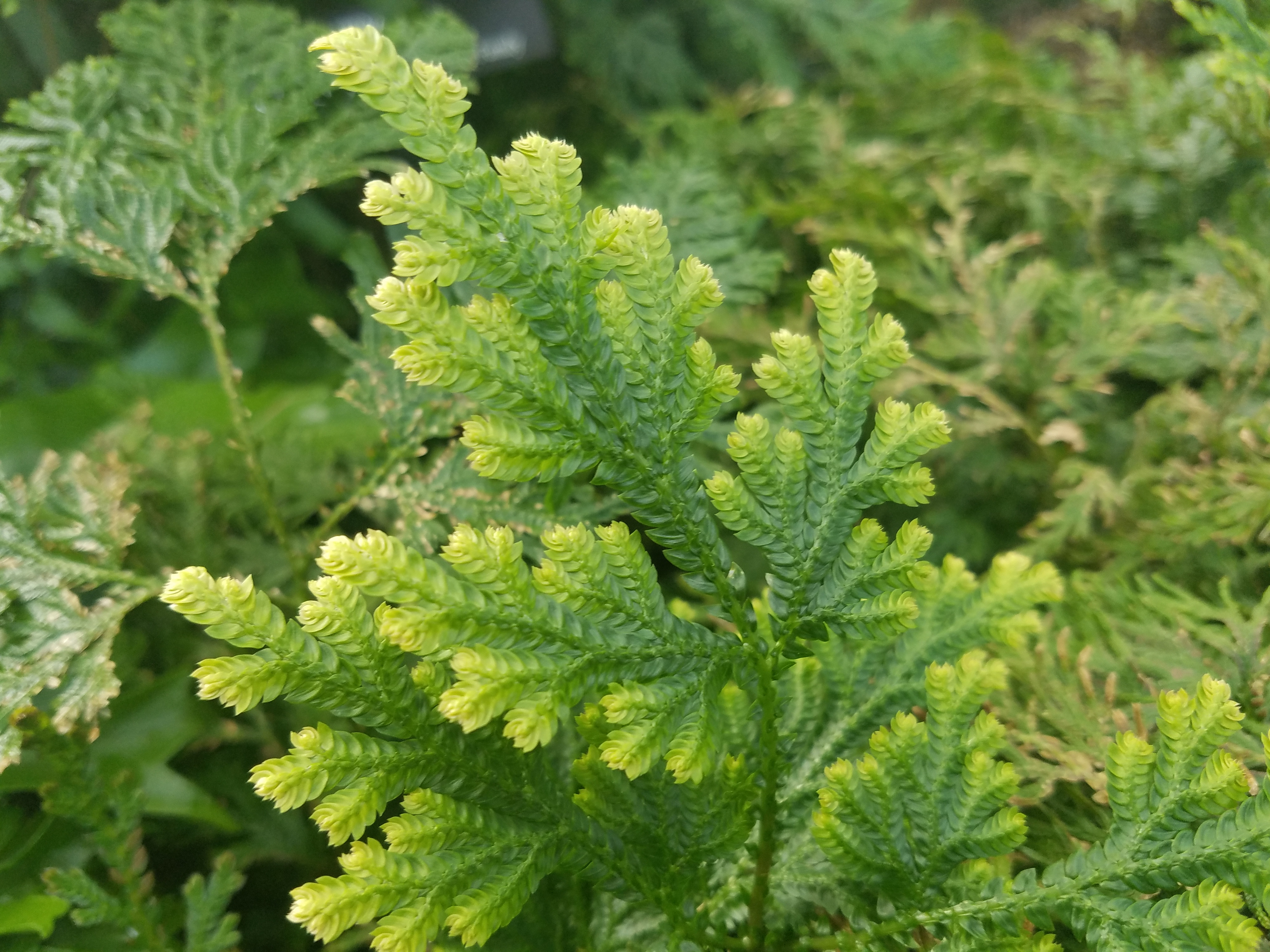
Although not a true fern, this ancient fern ally still reproduces via spores and is an excellent air purifier. Sometimes referred to as the Resurrection Fern, it has an amazing ability to rejuvenate after desiccation. Leaving a cutting out for several hours will make the fronds, particularly the juvenile ones, contract or roll up like the claws of a bird. It can regain metabolic processes remarkably quickly after rehydration and thus has been the center of study for medical applications.
“Recently, extracts of resurrection species and particular secondary metabolites therein were reported to display biological activities of importance to medicine, with e.g. antibacterial, anticancer, antifungal, and antiviral activities, rendering them possible candidates for the development of novel drug substances as well as for cosmetics9.”
Along with the benefits described above, Salenginella is one of the best at reducing air pollutants in your home as cited by the phytoremediation study in the reference section below.
Family – Selaginellaceae
Nativity – Tropical Asia and Polynesia
Hardiness – USDA Zone 10-11
Description;
1. Form – Evergreen perennial that has a rosette with densely packed stems
2. Landscape Size – 4”
3. Texture – Delicate, airy yet coarse
4. Growth Rate – Slow
5. Foliage – Bipinnate leaf arrangement
6. Fruit – Seedless
7. Spacing – 2”- 3”
Culture
1. Light – Part Sun / Light Shade
2. Soil – Moist acidic peat moss mix
3. Pruning – Minimal
4. Transplanting – Shallow root system
5. Propagation – Cuttings / Division of rooted fronds
6. Pests and Diseases – None serious
10. Davallia fejeensis – Rabbit-foot fern
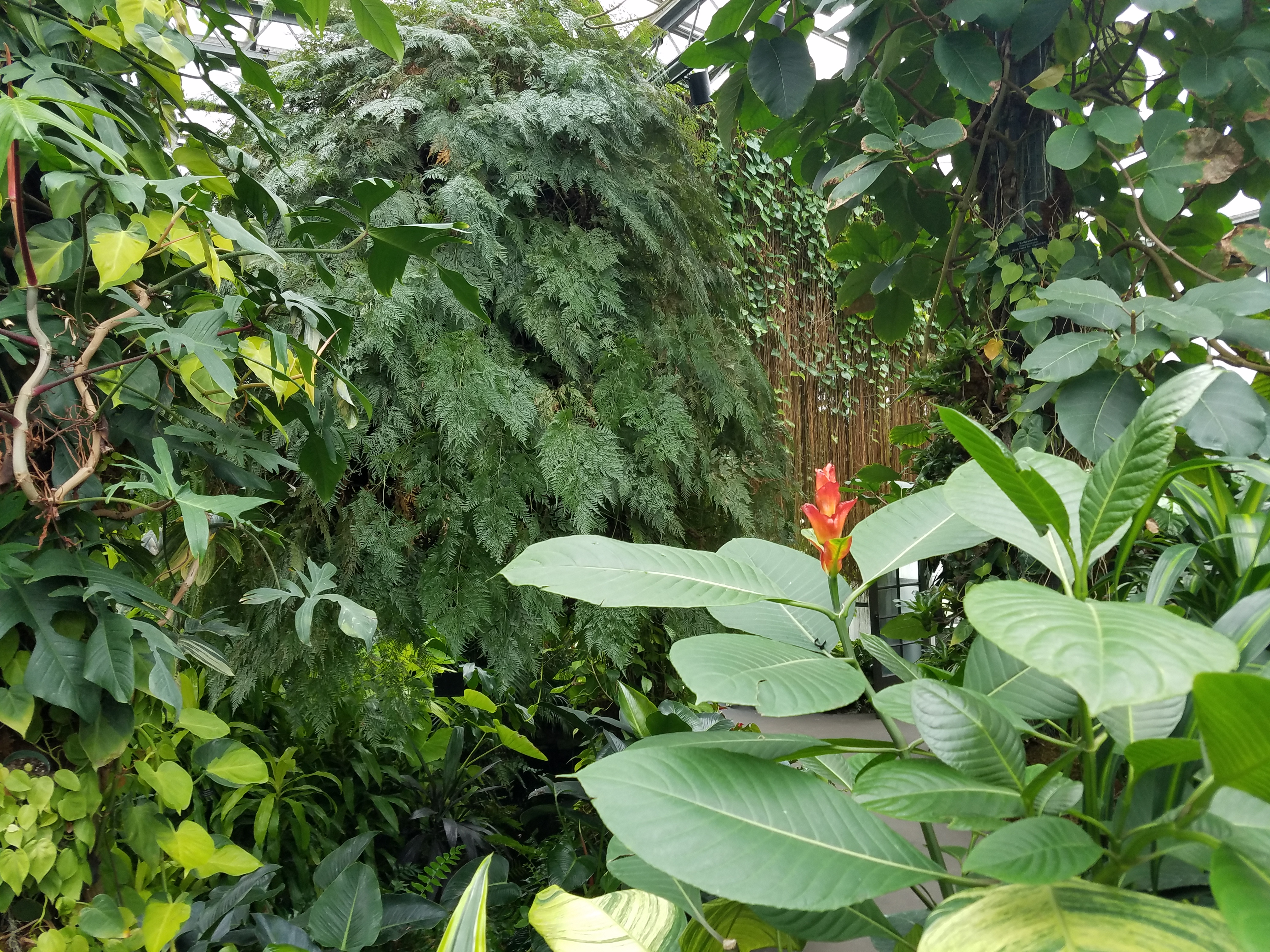
Endemic to the Fiji islands like the species name suggests, this fern can substitute as a pet in your home! The fuzzy rhizomes resemble a rabbit’s foot and are irresistible to touch. They can be grown in a container, but in my experience are much more pronounced and accessible to pets when grown in a hanging basket.
Your new fuzzy companion can also remove formaldehyde, benzene, toluene, and trichloroethylene, making it an ideal houseplant.
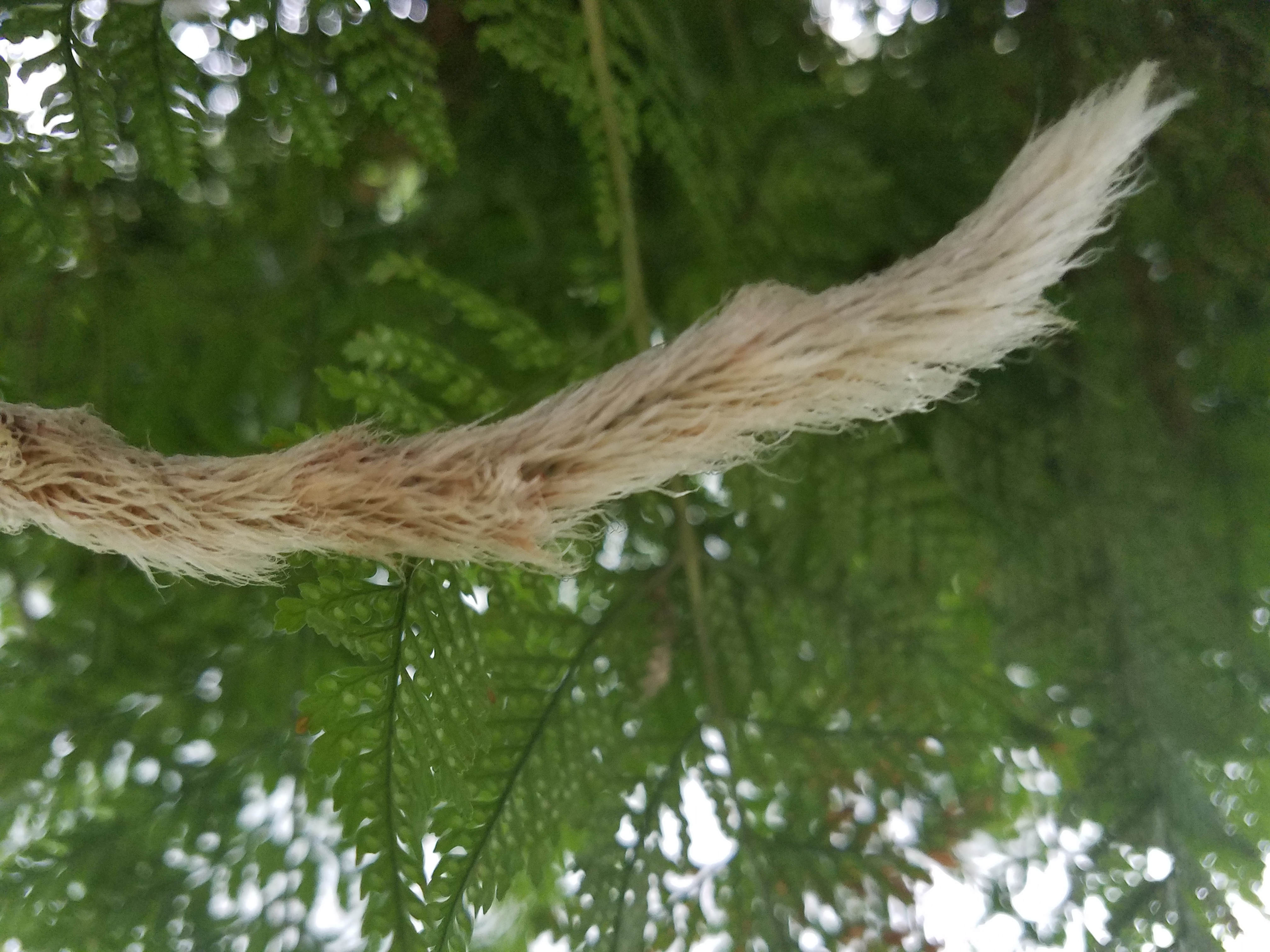
Family – Polypodiaceae
Nativity – Fiji Islands
Hardiness – USDA Zone 10-13
Description;
1. Form – Epiphytic fern with long creeping rhizomes
2. Landscape Size – 3’ – 4’ tall and wide
3. Texture – Glossy and smooth
4. Growth Rate – Medium
5. Foliage – Variable frond sizes and degree of dissection
6. Fruit – Spores
7. Spacing – 1’ – 3’
Culture;
1. Light – Partial sun
2. Soil – Well-drained high in organic matter
3. Pruning – Tends to be semi-deciduous / May drop fronds in late winter
4. Transplanting – Guide – http://www.agardenforthehouse.com/2012/10/davallia-fejeensis-the-rabbits-foot-fern/
5. Propagation – Division of rhizome / spores / Infrequent division is recommended
6. Pests and Diseases – Scale and Florida fern caterpillar
Comments:
Sorry, the comment form is closed at this time.



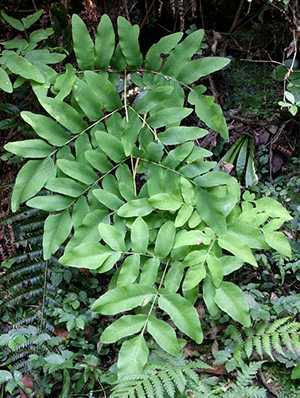
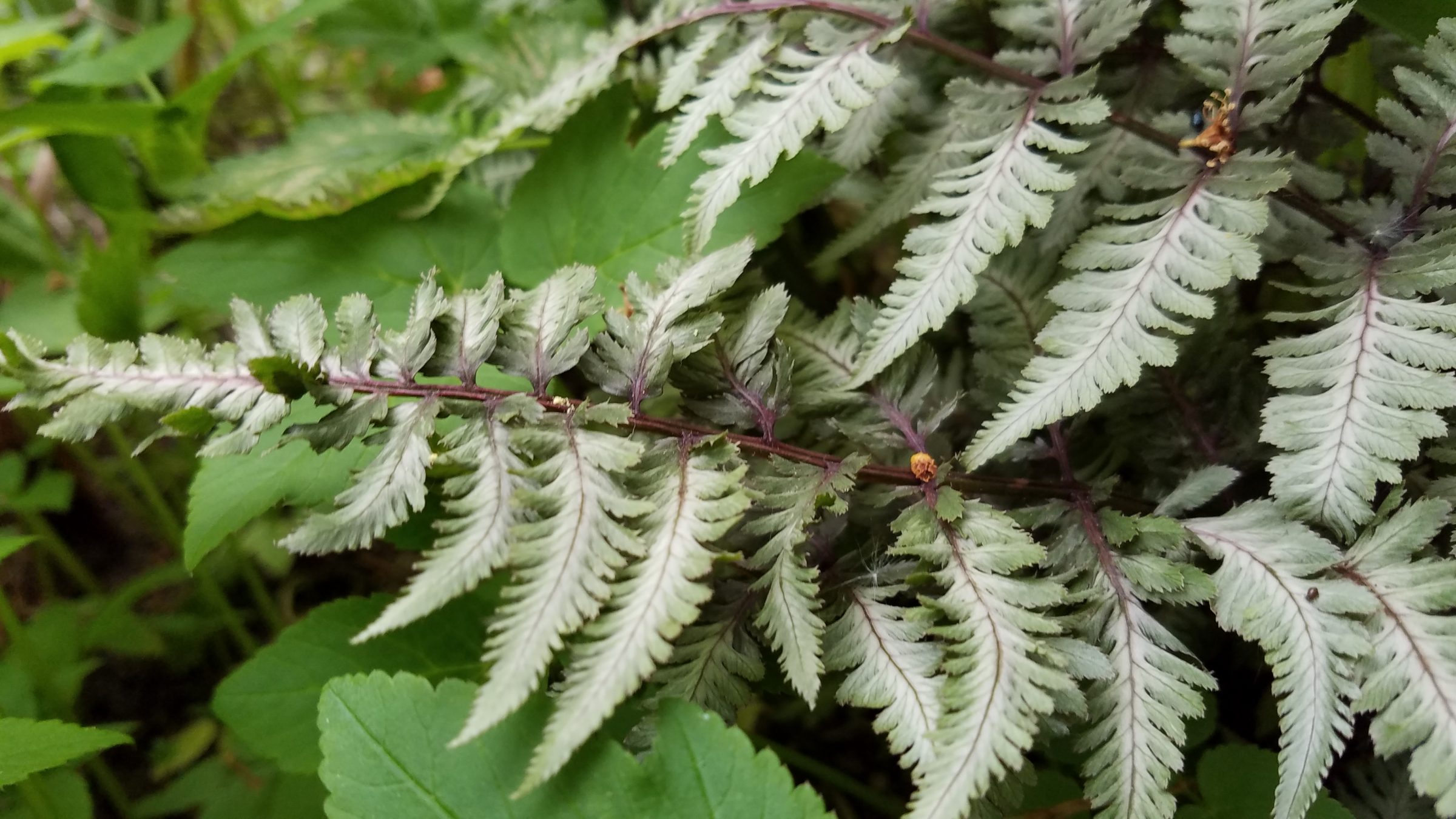
Joseph Kotnik
Pretty! This has been a really wonderful post. Thanks for providing these details.